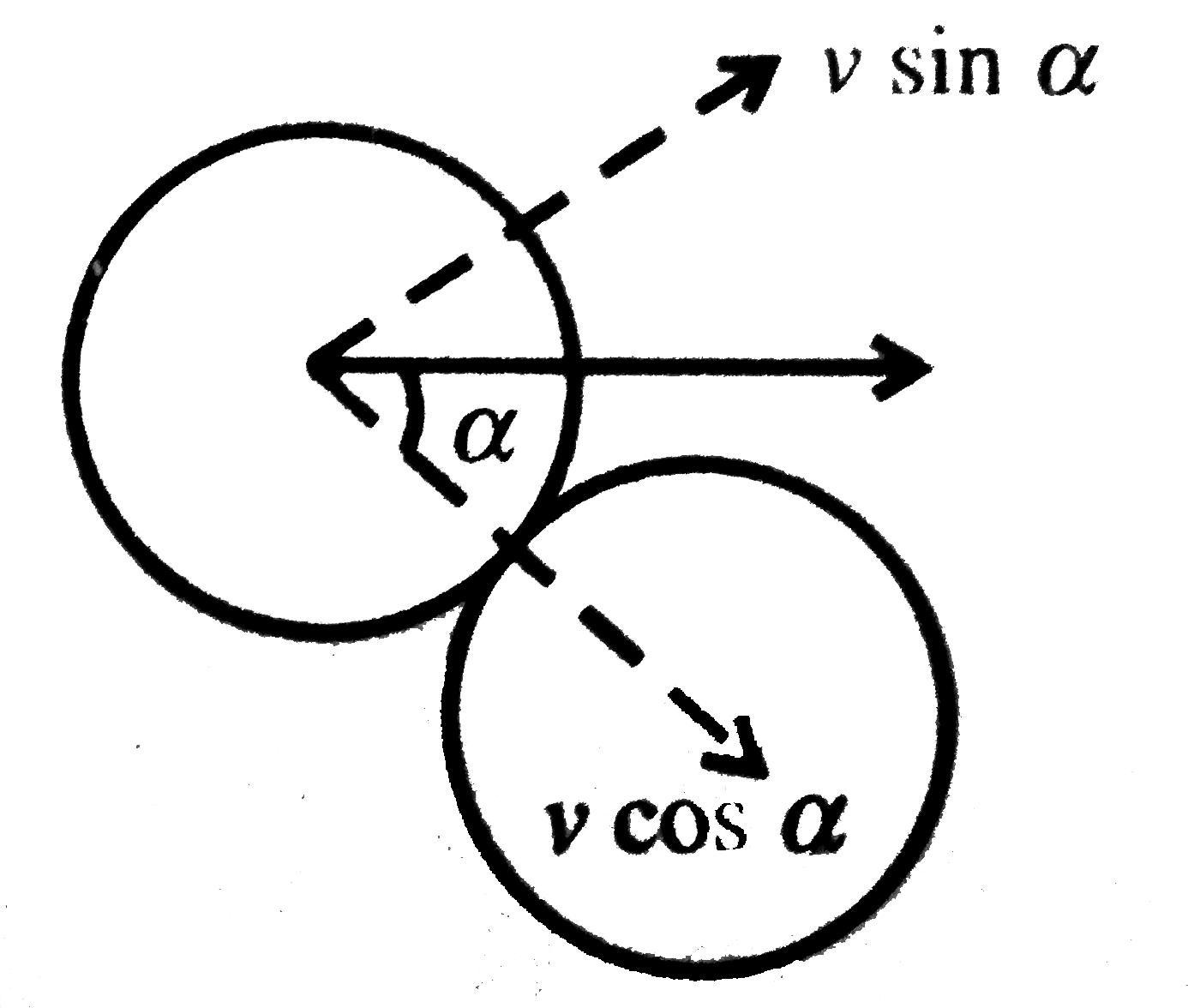A particle A suffers an oblique elastic collision particle B that is at rest initially. If their masses with a are the same, then after the collision
their KE may be equal
A continues to move in the original direction while B remains at rest
they will move in mutually perpendicular directions
A comes to rest and B starts rections moving in the direction of the original motion of A2
The correct Answer is:A, C, D
As masses are equal and collision elastic
Therefore velocity along line of impact gets exchane and velocity perpendicular to line of impact remains unchanged.
If α=45∘ the their speed will be same after collision, hence KE will be same.

Topper's Solved these Questions
- CENTRE OF MASSBook:CENGAGE PHYSICSChapter:CENTRE OF MASSExercise:Assertion - Reasoning
Explore 2 Videos
- CENTRE OF MASSBook:CENGAGE PHYSICSChapter:CENTRE OF MASSExercise:Linked Comprehension
Explore 105 Videos
- CENTRE OF MASSBook:CENGAGE PHYSICSChapter:CENTRE OF MASSExercise:Single Correct
Explore 141 Videos
- CALORIMETRYBook:CENGAGE PHYSICSChapter:CALORIMETRYExercise:Solved Example
Explore 13 Videos
- DIMENSIONS & MEASUREMENTBook:CENGAGE PHYSICSChapter:DIMENSIONS & MEASUREMENTExercise:Integer
Explore 2 Videos
Similar Questions
Consider an oblique elastic collision between a moving ball and a stationary ball of the same mass. Both the balls move with the same speed after the collision. After the collision, the angle between the directions of motion of two balls is x degree. Find the value of x.
View SolutionA particle of mass m moving with velocity →V makes a head on elastic collision with another particle of same mass initially at rest. The velocity of the first particle after the collision will be
View Solution
Knowledge Check
In an elastic collision between two particles
Anet external force is zeroBthe kinetic energy of the system before collision is equal to the kinetic of the system after collision.Clinear momentum of system before collision = linear momentum after collisionDthe total energy of the system is never conserved.In an elastic collision between two particles
Athe total kinetic energy of the system is always conserved.Bthe kinetic energy of the system before collision is equal to the kinetic energy of the system after collision.Cthe linear momentum of the system is conserved.Dthe mechanical energy of the system before collision is equal to the mechanical energy of the system after collision.A particle of mass m moving with velocity →V makes a head on elastic collision with another particle of same mass initially at rest. The velocity of the first particle after the collision will be
A→VB−→VC−2→VDZero
A particle P moving with speed v undergoes a head -on elastic collision with another particle Q of identical mass but at rest. After the collision the collision
View SolutionA ball of mass m moving with a velocity v undergoes an oblique elastic collision with another ball of the same mass m but at rest. After the collision if the two balls move with the same speeds , the angle between their directions of motion will be:
View SolutionA particle P moving with speed v undergoes a head - on elastic collision with another particle Q of identical mass but at rest. After the collision
View SolutionA particle P moving with speed v undergoes a head -on elastic collision with another particle Q of identical mass but at rest. After the collision the collision
View SolutionA particle of mass m makes a head-on elastic collision with a particle of mass 2m initially at rest. The velocity of the first particle before and after collision are given to be u1 and v1. Then which of the following statements is true in respect of this collision?
View Solution